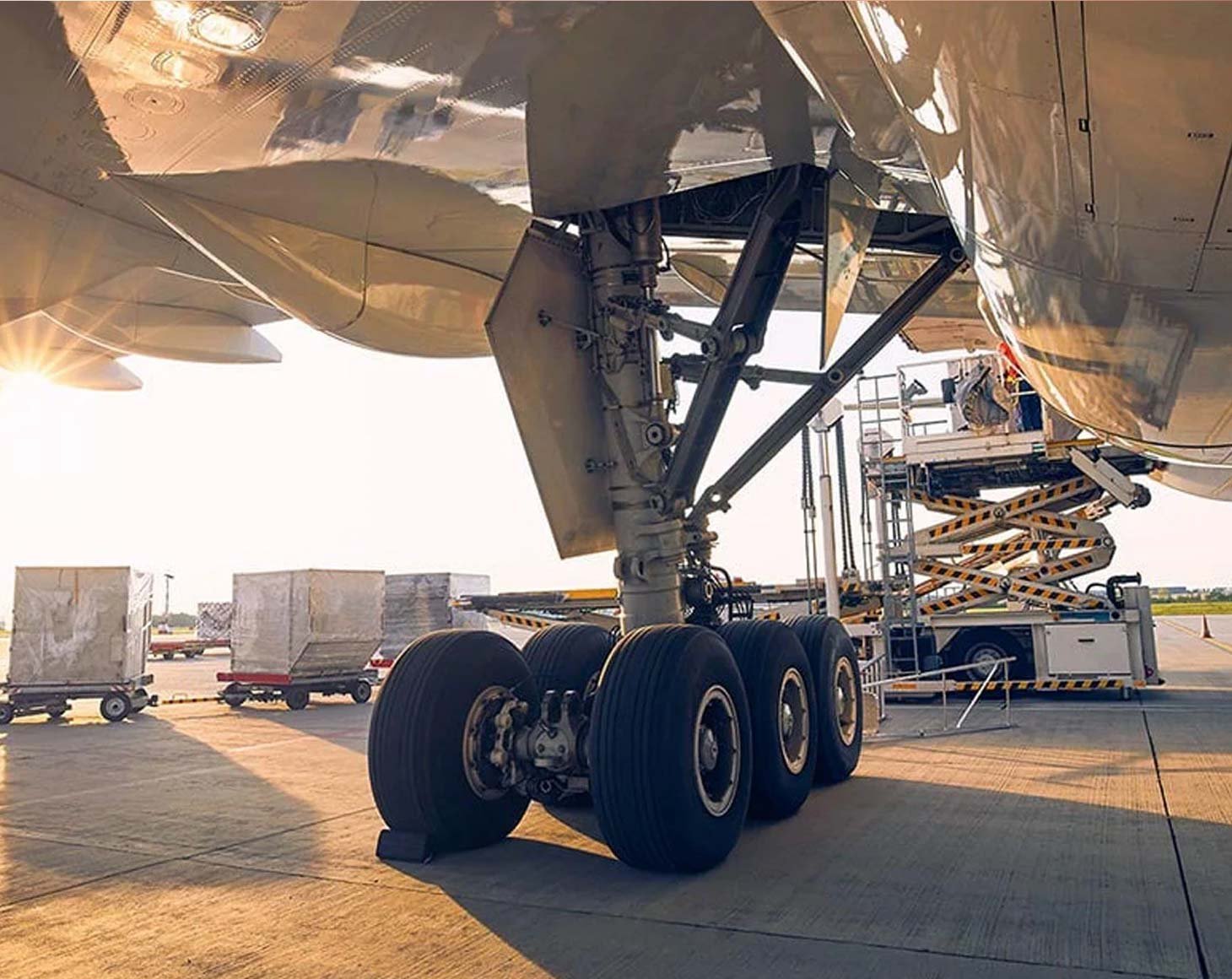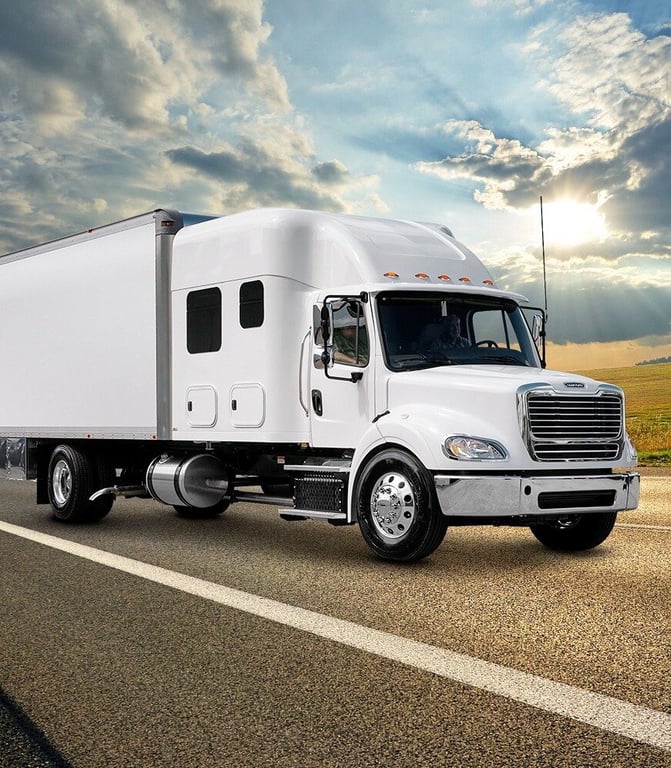Air Charter
If you've gotten "the call" or "the email" and you're staring at the clock with a sinking feeling in your stomach, you might just be in a time-critical shipment situation.
Ship Air Charter with Us
Worried that the size of your air charter shipment is too small, or too large and bulky? There's no such thing in our shipping network. At ExpeditedFreight.com, we use our partnerships with aircraft fleets positioned all over the country to match up your expedited air charter service with a plane or jet that's perfectly sized to carry it.
At ExpeditedFreight.com, we don’t just move freight — we provide peace of mind. Our dedicated team manages every detail of the air cargo charter process. No matter how complex or time-sensitive your shipping challenge may be, we deliver personalized service and unwavering reliability.

Why Work with ExpeditedFreight.com?
Real-Time Tracking, 24/7/365
With real-time updates and complete visibility, you can stay ahead of any potential delays and make informed decisions to keep your operations running smoothly.
A Single Point of Contact
From booking to delivery, you’ll have a dedicated expediter guiding you through every step of the logistics process. Experience seamless, personalized support from start to finish.
Multiple Options
We proactively analyze ground and air traffic, anticipate weather challenges, and account for potential flight delays to keep your shipment on track. Our goal is to overcome any obstacles and ensure your deadline is always met.
Experienced Agent Recommendations
Your air charter cargo is also the only cargo we carry on your plane, so it travels quickly, direct to your destination, with no stopovers for other customers. We continue that dedication by assigning an agent to your shipment; an experienced professional on our team that will serve as a convenient single point of contact if you have any questions about your shipment before it's loaded, after it's in the air or even post-landing.

Charter Aircraft
Below is a list of many of the most commonly used aircraft for air charter services, we'll match the ideal charter freight option to your specific needs.
| Aircraft | Payload Capacity (kg) | Volume (m3) | Hold Size (cm) | Door Size (cm) |
|---|---|---|---|---|
| Airbus A300 B4F | 44,500 | 300 | 3,550x477x245 | 318x244 |
| Airbus A300-A600F | 47,000 | 426 | 4,070x528x245 | 358x256 |
| Airbus A310-300F | 40,500 | 270 | 3,300x477x240 | 318x244 |
| Airbus A330-200F | 70,000 | 475 | 5,882x528x245 | 358x256 |
| Antonov An-12 | 18,000 | 85 | 1,355x280x240 | 280x240 |
| Antonov An-124 | 120,000 | 750 | 3,648x640x440 | 640x440 |
| Antonov An-225 | 250,000 | 1,100 | 4,535x640x440 | 640x440 |
| Antonov An-26 | 5,500 | 30 | 1,110x220x160 | 230x167 |
| Antonov An-74 | 10,000 | 52 | 1,050x215x220 | 240x227 |
| ATR 42 Cargo | 5,700 | 51 | 1,385x226x175 | 127x153 |
| ATR 72 Cargo | 8,200 | 76 | 1,796x226x175 | 127x153 |
| BAe 146-200F | 10,000 | 78 | 1,780x260x190 | 333x193 |
| BAe ATP Cargo | 8,200 | 78 | 1,550x200x180 | 263x172 |
| BAe HS 748 | 6,000 | 55 | 1,055x190x180 | 267x172 |
| Boeing B727-200F | 24,042 | 186 | 2,712x351x213 | 340x218 |
| Boeing B737-300F | 19,275 | 130 | 2,324x317x214 | 348x216 |
| Boeing B737-400F | 19,237 | 154 | 2,440x319x214 | 340x210 |
| Boeing B747-200F | 111,583 | 759 | 4,800x486x304 | 340x312 |
| Boeing B747-400F | 120,200 | 735 | 4,800x486x304 | 340x312 |
| Boeing B747-8 | 140,000 | 857 | 5,430x486x304 | 340x312 |
| Boeing B757-200F | 36,000 | 238 | 3,327x353x213 | 340x218 |
| Boeing B767 -200F | 42,000 | 367 | 3,116x442x250 | 340x244 |
| Boeing B767-300F | 54,000 | 450 | 3,890x450x250 | 340x250 |
| Boeing B777-200F | 103,000 | 653 | 4,412x582x315 | 372x315 |
| Boeing MD 11F | 85,000 | 575 | 4,400x488x244 | 350x259 |
| Cessna 406 | 1,400 | 7 | 340x129x130 | 120x120 |
| Convair CV-580 | 7,030 | 67 | 1,577x236x198 | 300x180 |
| Aircraft | Payload Capacity (kg) | Volume (m3) | Hold Size (cm) | Door Size (cm) |
|---|---|---|---|---|
| Dassault Falcon 20 Cargo | 2,041 | 10 | 6,09x152x140 | 187x140 |
| Dornier 228 | 1,950 | 18 | 635x127x147 | 133x138 |
| Embraer Bandeirante | 1,500 | 14 | 590x133x144 | 180x143 |
| Eurocopter AS-332 Super Puma | 20,000 | 17 | 681x180x147 | 130x135 |
| Fokker 27 | 6,000 | 62 | 1,524x210x190 | 232x178 |
| Ilyushin IL-62 | 40,000 | 230 | 2,798x317x212 | 345x200 |
| Ilyushin IL-76T and IL76-TD | 48,000 | 180 | 1,850x345x325 | 345x325 |
| Ilyushin IL-76TF | 60,000 | 400 | 3,114x345x325 | 345x325 |
| Ilyushin IL-96-400T | 88,000 | 580 | 4,444x571x286 | 485x287 |
| Kamov Ka 32 | 5,000 | 7 | 452x130x132 | 120x120 |
| Kingair 90 | 1,000 | 4 | 368x127x120 | 160x109 |
| Lockheed L-100-30 Hercules | 21,000 | 140 | 1,609x301x260 | 301x274 |
| Lockheed L-188 Electra | 15,000 | 91 | 2,200x274x210 | 355x198 |
| Lockheed L1011 TriStar | 55,000 | 440 | 3,300x485x274 | 431x284 |
| McDonnell Douglas DC 9-15F | 10,400 | 91 | 2,340x274x205 | 346x206 |
| McDonnell Douglas DC-10F | 65,000 | 484 | 3,725x558x234 | 356x259 |
| McDonnell Douglas DC-8 54 55F | 41,000 | 201 | 3,100x322x218 | 355x215 |
| McDonnell Douglas DC-8 62F | 42,000 | 220 | 3,300x322x218 | 355x215 |
| McDonnell Douglas DC-8 71 73F | 45,000 | 302 | 3,900x313x210 | 350x216 |
| Metro II | 1,250 | 18 | 900x110x27 | 135x130 |
| Metro III | 2,000 | 12 | 918x115x105 | 135x130 |
| Mil Mi-26 | 20,000 | 110 | 1,200x320x310 | 290x320 |
| Mil Mi-8 | 4,000 | 23 | 534x230x180 | 234x182 |
| Piper PA-31 | 600 | 4 | 386x103x130 | 65x113 |
| Saab 340 | 3,850 | 36 | 1,110x162x175 | 135x130 |
| Shorts SD 360 | 3,200 | 42 | 840x176x180 | 141x167 |
| Tupolev Tu 204 | 28,500 | 170 | 3,200x318x210 | 340x210 |
We’ve Got the Solution for your Urgent Shipment
Our goal is to give you value that exceeds the price of our shipping, providing you a benefit that keeps you productive and profitable for years to come.
Truly Expedited Air Charter Services
When we say dedicated, we mean it: your air charter cargo is always handled with care and attention, never passed off to a third party service. We understand that missing deadlines simply isn't an option, particularly when the success of time-sensitive events, like building site timelines or stockholder presentations, are on the line. Every aspect of our air charter approach has been fine-tuned to shave off valuable time without cutting corners: it's an art we've perfected after years of successful air deliveries. You'll find working with us not only straightforward and easy, but transparent as well: from our detailed quotes to real-time shipment tracking, you're never far from your air charter cargo, even if it's clear across the country. That's peace of mind that's hard to come by in the expedited air shipping industry, but we feel that it's worth the extra effort to provide superior service to our clients.
When it needs to be there now and your timelines aren't negotiable, it's time to make the call to use the fastest shipping method possible: air charter through ExpeditedFreight.com. Pick up the phone and call us now to get the rapid shipping solution you've been searching for - and the peace of mind you deserve.

We’ve Got the Solution for your Urgent Shipment
Our goal is to give you value that exceeds the price of our shipping, providing you a benefit that keeps you productive and profitable for years to come.
Dedicated Single Point of Contact
Our client support team is available on a centralized line to take your order without hesitation. Once you’ve placed the order, you can call the same line for updates on the location of the truck and remaining time before delivery. You’re free to play a hands-on role by calling our SPOC.

Hi I'm Steve
Reach out today and let's solve your urgent shipping needs. I or a member of the team will be with you from start to finish. Let's chat
Resource Center

Same Day Delivery and Hot Shot Trucking Were Lifesavers for a Music Industry Client
AirFreight.com is the privately owned company behind SameDayDelivery.com and HotShotTrucking.com. Each share the same mission: to transform the transportation industry.

AirFreight.com Saved The Farm By Solving A Major Shipping Delay
Learn how we saved a Montana-based artisanal farm thousands of dollars by expediting a shipment of perishable goods.

AirFreight.com Solved a PGA Tour Shipping Emergency
Learn how AirFreight.com located a lost shipment and helped save the PGA Golf Tour.

Expedited Shipping Vendor Comparison
We’ve done the research for you. This vendor comparison sheet breaks down how AirFreight.com stacks up against the competition.


